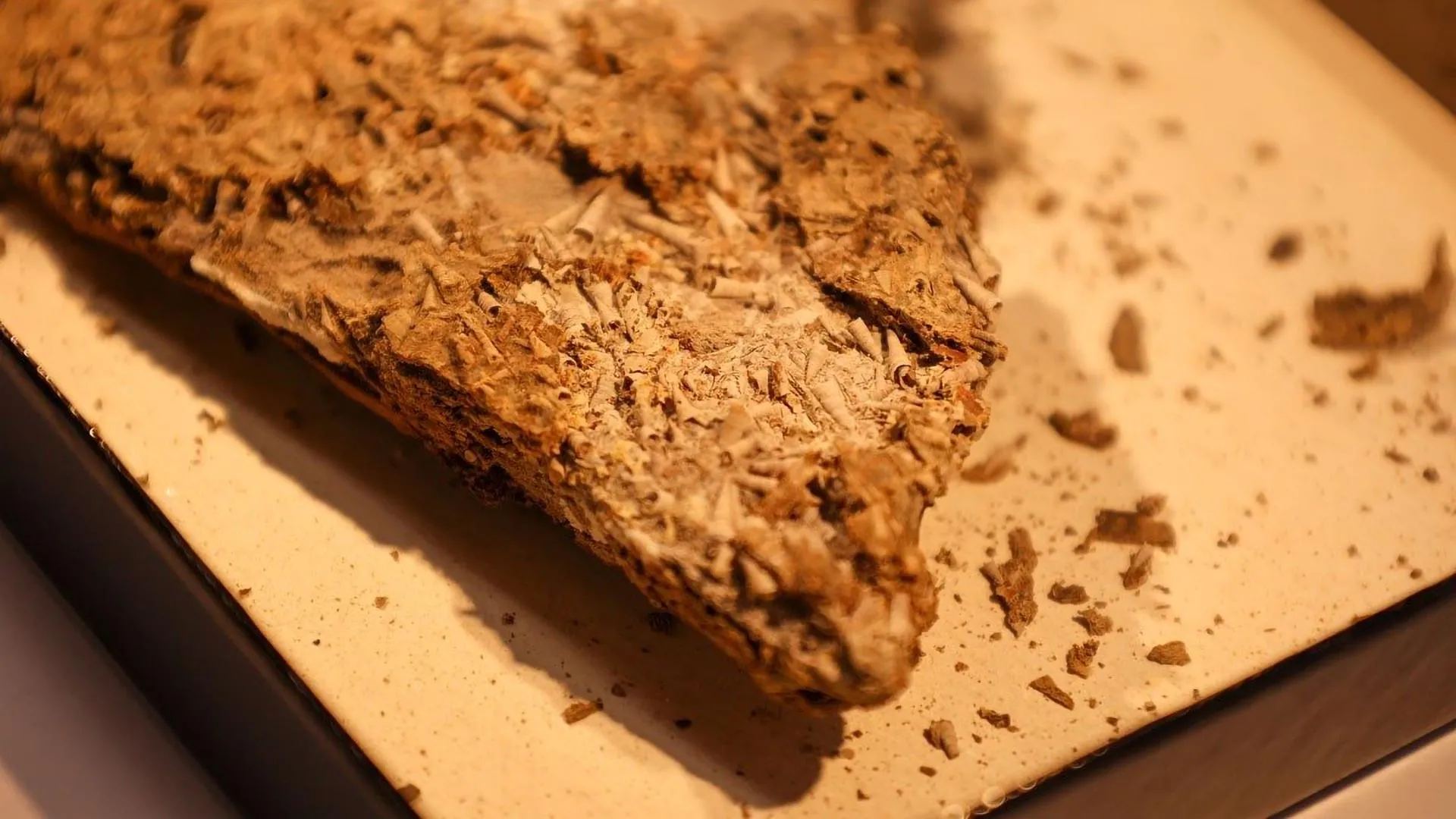A 540-million-year-old fossil is rewriting evolution
Salterella’s strange, double-layered shell baffled scientists for decades until modern analysis tied it to jellyfish and coral relatives.
- Date:
- November 12, 2025
- Source:
- Virginia Tech
- Summary:
- Over 500 million years ago, the Cambrian Period sparked an explosion of skeletal creativity. Salterella, a peculiar fossil, defied conventions by combining two different mineral-building methods. After decades of confusion, scientists have linked it to the cnidarian family. The find deepens our understanding of how animals first learned to build their own skeletons.
- Share:

Recently, Halloween may have brought thoughts of skeletons, but the true "skeleton age" began long ago during the early Cambrian Period, roughly 538 to 506 million years ago.
During this transformative era, many of Earth's major animal groups independently figured out how to create mineralized skeletons or shells. They typically did this in one of two ways: either by building mineral tissues on an organic framework (similar to how humans form bones and teeth) or by collecting minerals from their surroundings and binding them together into a hardened outer covering.
These construction strategies proved remarkably successful, persisting for more than half a billion years with little need for change.
A Fossil That Broke the Rules
Among the many Cambrian creatures, one stood out for doing things differently. Fossil evidence of Salterella -- a small, cone-shaped organism abundant in early Cambrian rocks -- reveals an unusual approach to skeleton building. So distinctive is this fossil that paleontologists often use it as an index fossil to determine the age of rock layers.
Unlike most of its contemporaries, Salterella didn't choose just one method for making its shell. It first built a conical outer structure and then filled the inner cavity with carefully selected mineral grains, creating a second layer inside the shell. This kind of double construction is almost unheard of among ancient animals.
"It makes Salterella difficult to place on the tree of life," explained Prescott Vayda, a geosciences graduate student who led a recent study on the mysterious fossil published in the Journal of Paleontology.
The Long Search for Salterella's True Home
Over the years, scientists have struggled to determine where Salterella fits in the evolutionary story. It was first grouped with squids and octopuses, then with sea slugs, jellyfish ancestors, and even worms. Eventually, in the 1970s, researchers gave up trying to fit it neatly into an existing category and created a new one for Salterella and a related fossil called Volborthella.
And there, for decades, the two remained -- isolated and misunderstood.
That began to change when Vayda and University Distinguished Professor Shuhai Xiao set out to find new connections.
"Finding the right place for these fossils is important for our understanding of how animals evolved skeletons and shells," said Vayda.
Fossil Clues from Across Continents
Vayda spent four years gathering Salterella samples from sites as far-flung as Death Valley, the Yukon in Canada, and Wythe County, Virginia. Collaborating with researchers at Virginia Tech, Johns Hopkins University, Dartmouth College, the University of Missouri, and the Denver Museum of Nature and Science, he analyzed the fossils' shapes, mineral makeup, and crystal structures to better understand their biology and origins.
What he found was that Salterella may have been small, but it was picky about its materials. It avoided clay minerals entirely, tolerated quartz, but seemed to prefer titanium-rich grains -- an impressively strong choice for an ancient organism.
No clays, for instance, ew. Quartz was acceptable, but not ideal. Titanium was choice, of course. Who wouldn't like a Titanium skeleton?
Reconstructing an Ancient Builder
The range of minerals used suggested that Salterella's inner structure served a purpose beyond mere protection. Researchers suspect the added minerals may have helped stabilize the shell or aided in feeding. The fossil evidence also hints that the animal may have possessed small appendages for picking up and arranging mineral grains.
"We're starting to get an image of their biology and where they fit in the larger web of life," said Vayda.
After examining their form, habitat, and shell structure, the team concluded that Salterella and Volborthella most likely belonged to the cnidarian group -- relatives of modern corals, jellyfish, and sea anemones.
Rediscovering a Lost Link in Evolution
Reconnecting this long-misunderstood branch of evolutionary history provides new insights into how early animals began forming shells and skeletons. These findings add another piece to the puzzle of life's earliest innovations and help clarify how complex body structures evolved on Earth.
And for Vayda, the motivation behind the work runs deeper: it's about "truly learning where we come from and the history of life on Earth, which is an amazing and beautiful thing."
Story Source:
Materials provided by Virginia Tech. Note: Content may be edited for style and length.
Journal Reference:
- Prescott J. Vayda, Shuhai Xiao, Noah D. Keller, Amy P. I. Hagen, Justin V. Strauss, James W. Hagadorn, Mary C. Lonsdale, Tara Selly, James D. Schiffbauer. A Cnidarian affinity for Salterella and Volborthella: implications for the evolution of shells. Journal of Paleontology, 2025; 1 DOI: 10.1017/jpa.2025.10164
Cite This Page: